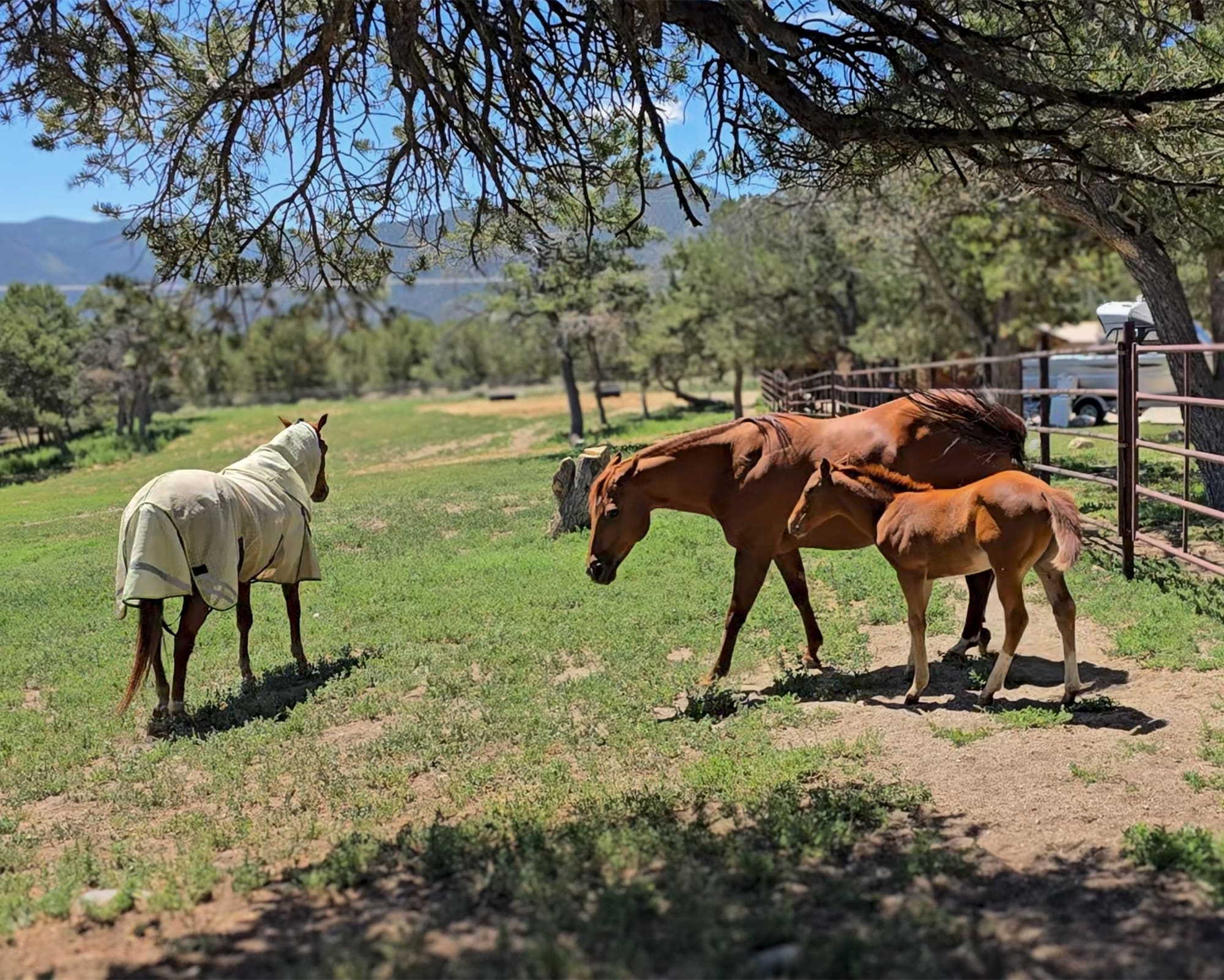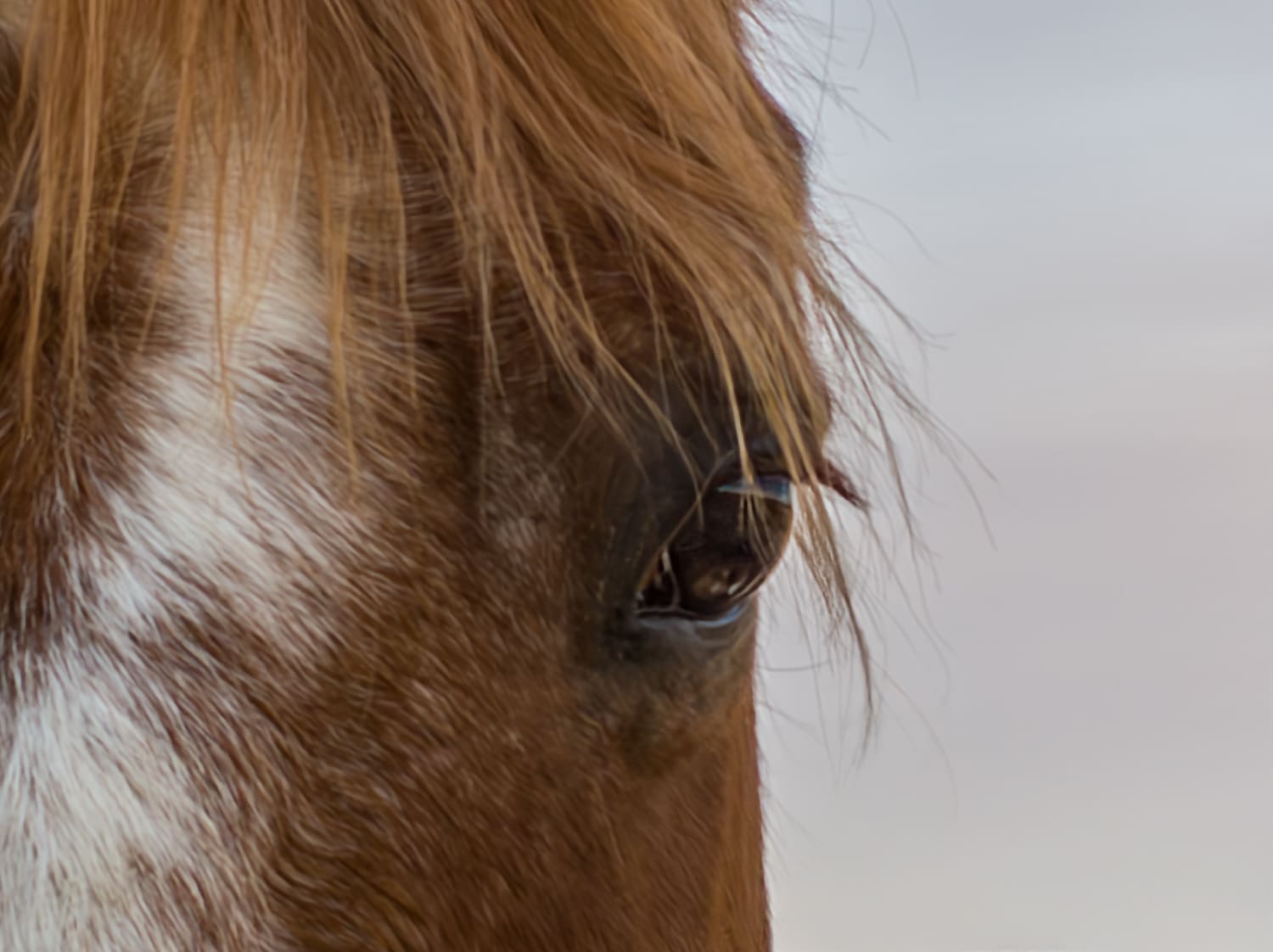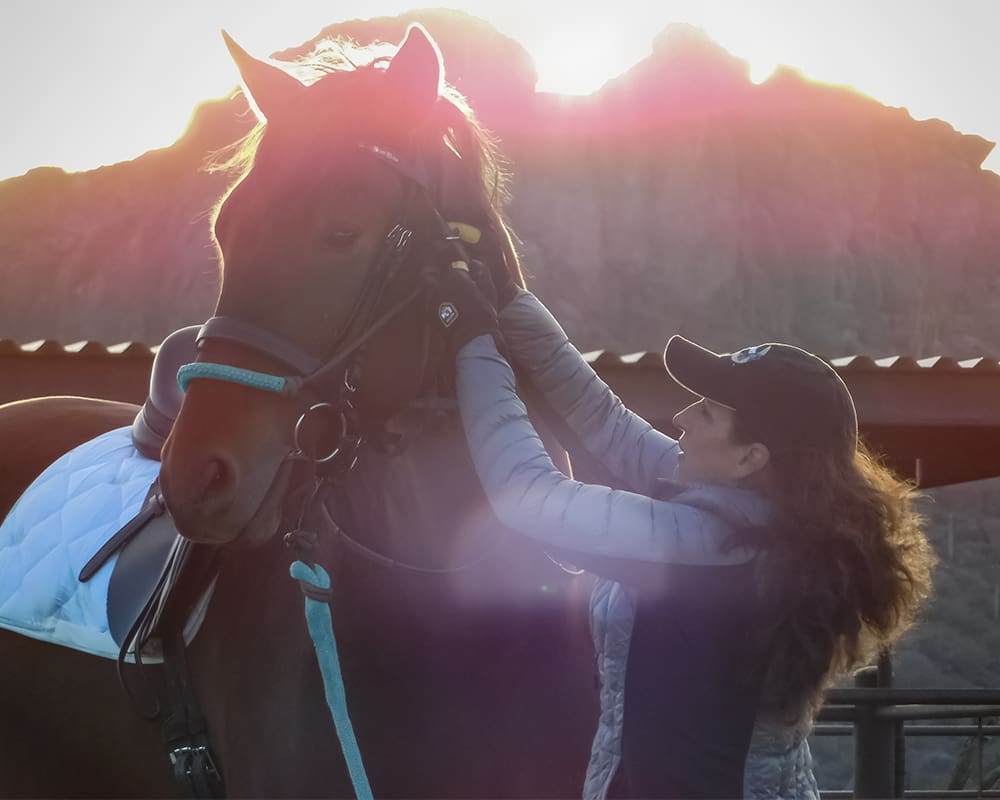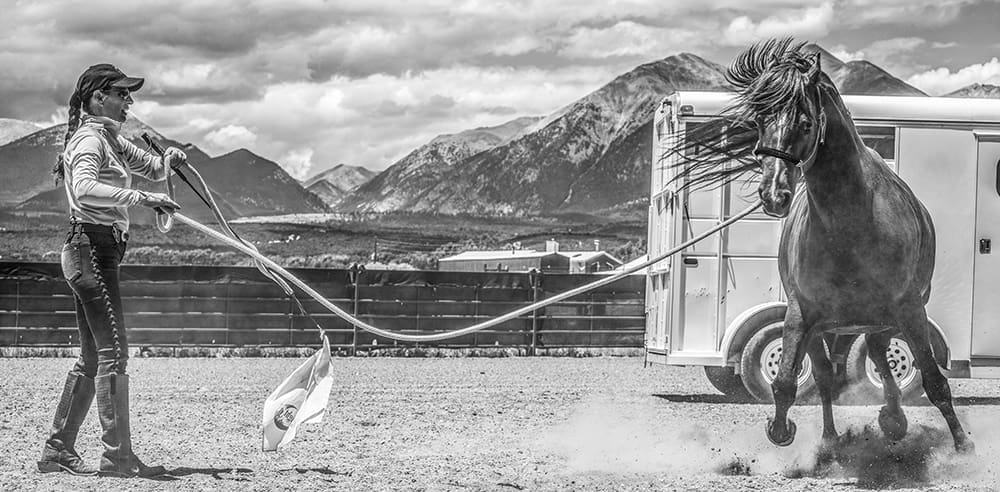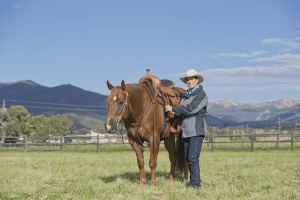 At each of my clinics, my attention first turns to the horses’ tack to check for fit, adjustment and function. When it comes to saddle fit, my eyes always go to these three parts of the horse first: the withers, the shoulders and the loins.
At each of my clinics, my attention first turns to the horses’ tack to check for fit, adjustment and function. When it comes to saddle fit, my eyes always go to these three parts of the horse first: the withers, the shoulders and the loins.
Most of the saddle fit issues I see affect one of these three parts of the horse. Often problems can be fixed by simply adjusting the placement of the saddle or getting a little creative with padding. Sometimes a different saddle is needed and for some horses, saddle fit will always be a challenge. Whatever the case, we owe it to our horses to make sure that they are as comfortable as possible while we ride.
The Saddle’s Function
The tree of the saddle serves the purpose of evenly distributing the weight of the rider over a larger area–so that the pressure is not focalized on one point of the horse’s back. When the tree fits the horse’s back well, he can carry the weight of the rider comfortably. When the bars of the tree are not evenly contacting the horse’s back, he will develop pressure points which can lead to soreness, scarring on his back, and even permanent damage. Keep in mind that saddle trees are made to fit average horses, but not all horses are average. Also, saddle trees are made to be symmetrical and not all horses are the same on both sides of their spines.
Whether your horse has anomalies or not, assessing saddle fit each year is important, since horses, just like humans, change body shape as they age. Of course we want to look at the big picture for saddle fit, but here are the three areas that I see the most problems. The best way to check saddle fit is to place the saddle on the horse’s back without any pads, un-cinched, so you can see how the shape of the tree jives with the horse’s back.
The Withers
In a perfect world, your horse’s withers would be prominent enough to hold the saddle well, but not so high that they hit the pommel. The “average” horse will not have any problems here, but high withers or very low withers can be a challenge when it comes to saddle fit.
The “mutton withered” horse (very low withers) tends to be quite round, instead of ‘A’ shaped at the withers. There may be a lot of fat or muscling on top of the shoulder blades that make it seem like the withers are low. This horse will generally need the cinch or girth very tight to prevent the saddle from slipping. You will probably not have trouble with the withers hitting the pommel, but you may have too much constriction at the shoulders and/or need an anti-slip pad or a split-withered pad to help keep the saddle from slipping too much.
The horse with prominent withers is more of a challenge for saddle fit. Certain types of horses, like Thoroughbreds, may have prominent withers. As horses age, their withers naturally become more prominent. Obviously, when a horse is in poor flesh (low body condition score), the fat and muscling that often sits below the withers and the flesh that surrounds the spine all the way down his back can disappear, leaving the withers and back bone more vulnerable.
Combined with other saddle fit challenges like low in the back, short backed or long backed, the horse with high withers can be hard to fit in a traditional saddle. Often, horses with high withers can be comfortably fit by using a split-withered pad to gain a little clearance and/or using a back pad or bridge pad in addition to your regular pad to lift the whole saddle. Bridge Pads
To check for adequate clearance over the withers, you should be able to stick your whole hand in over the withers, under the pommel, when the horse is saddled and cinched normally. Remember, once you sit up there, the saddle will be even closer to the horse’s withers, so make sure there is plenty of room there.
The Shoulders
Just above the shoulders and below the withers, you often see white spots or white hairs on a horse. This is a tell-tail of poor saddle fit and often goes unnoticed or is mistakenly thought to be a natural white marking. It is usually an indication that there is too much pressure on the horse’s shoulder blades and/or his shoulder blades are running into the front of the tree when he moves. Surprisingly, many horses will tolerate this pressure without much protest, resulting in the horse possibly being ridden for years in an ill-fitting saddle.
Keeping in mind that horses change body shape every year from birth to old age (three to four times as fast as a human), a saddle that fit your horse perfectly when he was four, may not fit at all when he is 8. This was the case with my horse Eddie, who I started riding as a three year old. Then, he fit perfectly in a full-skirted saddle with a regular sized Circle Y Flex2 tree. By the time he was seven (when horses really mature), he not only needed a wide-tree version of the same saddle, but he also needed a shorter skirted saddle. We moved him from the Monarch saddle to the Wind River in my line of saddles—the design is almost the same, but the skirt is a bit shorter and rounded in the Wind River. We continue to experiment with denser but thinner pads for him to accommodate his heavy muscling.
If a horse is experiencing too much pressure at the shoulders, he could need a wider tree or the saddle may be bridging (this occurs when the bars of the tree touch in front and back but not in the middle). If the tree is too narrow for the horse, he needs a wider tree saddle; there is nothing you can do to pad that out (it would be like putting on an extra pair of socks when your shoes are too small). But if the tree is bridging, often a configuration of pads will help. Look into bridge pads, shim pads or sway-back pads. Be wary of pads with built up shoulders, since that may just shift the fit problem off the shoulders and onto the loins.
Sometimes I see horses with white marks on their backs caused simply by placing the saddle too far forward. Look for the screw that sits right at the base of the pommel in both English and Western saddles. This screw shows you the forward point of pressure from the tree and it should sit behind the shoulder blades in the “pocket.” Depending on the slope of the horse’s shoulders, the prominence of his withers, the length of his back, and how the saddle is rigged, the saddle may sit farther back on one horse than it does on another. Sometimes people try to position the saddle by lining up the cinch behind the elbow, but that doesn’t really work. Depending on how your horse is built and how the saddle is rigged, the cinch may be farther back on some horses.
To check the saddle fit in regards to the shoulder, put the saddle on the horse without pads and without cinching. Holding the saddle in place with one hand as someone else leads your horse at the walk, slide your other hand up under the saddle until you feel the top of the horse’s shoulder blade. As he walks, you’ll feel the shoulder move back; make sure your fingers aren’t being pinched between the tree and the shoulder blade as the horse walks.
The Loins
How the saddle fits at the loins, behind the saddle, is more of a concern in Western saddles but it is an area that tends to be over-looked by all kinds riders, when it comes to saddle fit. The Western saddle is generally longer than the English saddle, giving a greater potential for problems at the loins, but both English and Western saddles can be out of balance on a horse, causing an increase of pressure on the horse’s back.
Once the horse is saddled, with the horse standing on level ground, step back and look at the horse from the side. The seat of the saddle should appear to be level—not inclined uphill or downhill. If the saddle appears to be going uphill, it may be out of balance and putting too much pressure on the loins of the horse, as well as throwing the rider out of balance and into the “backseat” position. Often, moving the saddle back a little will help level it out or using back pads or shim pads may help.
Since the Western saddle is generally longer than an English saddle, it’s important to check how the saddle fits all the way at the back of the skirts. Horses can be quite different in shape at the loins—the spine may rise up there and/or the horse may not have enough flesh to protect the spine. Make sure the saddle accommodates the shape of the horse’s back at his loins and is not pressing down into the back. Keep in mind that whatever you see from the ground could be much different or worse for the horse once the rider is mounted.
Often Western saddles will have a ‘V’ shape behind or the skirts are laced together in such a way so as to not press into the horse’s loins. In the case of very short-coupled horses, you may need to look at a saddle that is shorter in overall length—with a rounded skirt or a saddle that is specifically designed for short-backed horses. ‘Hybrid’ designs (cross between English and Western) or endurance style saddles tend to be shorter in overall length than a traditional Western saddle.
Keep Up the Good Work
It’s important to assess your saddle fit every year. Mark it on the calendar and check. It’s so easy to get complacent and overlook developing problems if you don’t check often. Many riders don’t notice a problem until it’s been there for a while, until it causes behavioral issues, or until someone with fresher eyes sees it (this is a big advantage of going to a riding clinic). These three areas—the withers, the shoulders and the loins, are easy to check and I try to assess it on every saddled horse that comes in front of me.
While most horses can fit into readily available saddles, some horses will always be a challenge. A custom-made saddle or an unconventional type of saddle made for a different discipline may be the right choice.
Think of it this way: shopping for a saddle is a lot like purchasing shoes for yourself. If you wear a size 7, most size 7 shoes will fit—right off the rack. Some will be a little snug and some too big. Sometimes, with the right socks, all can be comfortable. That’s what we want to do in regards to saddle fit— choose the saddle that’s best for your horse and see what you need to do to make it a perfect fit. Consider all the options. Find the best shape for the horse, and if it’s not perfect, pad it out to make the fit as comfortable as possible.
Designing Saddles to Fit
There’s no one magic saddle that fits every horse, that’s why I decided I had to have different types of saddles in my own line. The saddles had to be available in regular and wide trees and I wanted to make sure there were different lengths of skirting to fit the longer and short-backed horses. The design of the tree was most important. I wanted to make sure that there was a substantial tree that would distribute weight well. I ultimately chose Circle Y’s Flex 2 tree as it has some give for the horse—allowing him to move comfortably without a rigid tree, but is strong enough to carry weight without bowing. Other flexible trees could not make this claim and having a rigid tree made it more difficult to fit many horses during my travels.
My favorite saddle in the line is the Monarch—it has a more traditional, longer skirt and room to attach bags and jackets for the trail. The shape matches the traditional Western saddle look. The same saddle with a rounded skirt (better for short-backed horses) fits my horse, Eddie better than a longer skirt would. Having the tree widths available in wide and regular (with a 2-degree difference) helps fit the high withered and the stocky horses. Plus, having a tall gullet and opening at the back of the saddle keeps weight off of the horse’s spine. It’s got other comfort features for both the horse and rider, making a more comfortable ride for both. Check out all of my saddles HERE
We owe it to the horses to get the best fit possible. Get expert advice whenever you can. Professional saddle fitters are well worth the expense and are experts not only in fit, but also in how saddles are constructed and what options are available. I prefer certified saddle fitters. Often horse trainers, riding instructors and veterinarians can help with saddle fitting advice, in lieu of a saddle fit expert.
Enjoy the ride,
Julie Goodnight
